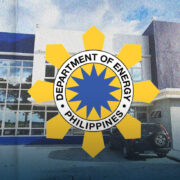Project Noah and the flood of forgetfulness that swept it away

Typhoon alone is devastating enough. We’ve seen it, “Yolanda’s” apocalypse, “Odette’s” aftermath, roofs peeled off like loose scabs, and lives swept away by neglect. Yet the real storm doesn’t end when the clouds clear. It lingers quietly in the corridors of power, in the Department of Public Works and Highways offices, and in the backrooms of contractors, where every rainfall is a rainfall project, and every flood is a funding opportunity.
After Yolanda’s wrath left the nation battered and grieving, the government finally launched what seemed to be a genuine act of foresight: Project Noah. For once, we built something that didn’t begin with a ribbon-cutting or end with a scandal. It was an ark of science, engineered to help us prepare for disasters, predict floods, and quite literally save lives.
Project Noah, short for Nationwide Operational Assessment of Hazards, was designed to give Filipinos a fighting chance against nature. With real-time data, satellite imagery, and flood forecasts, it was the kind of system that made sense. A modern ark, built not of wood and faith, but of data and diligence.
Then came 2017, and like the biblical flood that swept away the unworthy, Project Noah was defunded, not by nature, but by bureaucracy.
Under former President Rodrigo Duterte’s administration, it was quietly dismantled, as if public safety were an unnecessary expense. The logic, of course, was impeccable, if you think like a contractor. Why fund prevention when profit lies in rebuilding? Why invest in transparency when tarpaulins make better headlines?
And so, the ark was sunk, not by a storm, but by a budget cut.
Ironically, Project Noah still exists, or at least, still floats somewhere in digital limbo. Its website, noah.up.edu.ph, remains alive, in beta, functional, warning citizens to seek higher ground while the government that abandoned it continues to drown in its own flood of corruption.
The brilliance of defunding it lies in plausible deniability. No data, no accountability. The fewer the sensors, the fewer the questions about where the flood control funds went. After all, it’s hard to hide anomalies in public works projects when rainfall patterns are publicly monitored.
Project Noah once advised citizens in real time whether their homes, towns, or provinces were at risk. It wasn’t just a website; it was a lifeline. Now, it’s a ghostship, whispering from cyberspace while the captains of the ship of state look away, pretending not to hear the alarms.
And as another typhoon season rolls in, we brace again for familiar names. We welcomed Typhoon “Tino,” and days later, for a finishing touch, Supertyphoon “Uwan.” Because if storms can’t teach us humility, maybe redundancy can.
The irony remains biblical.
Noah, the original one, built an ark to survive the Great Flood.
Our modern Noah was built to prevent one, and it was sunk by the flood of corruption it sought to expose.
In the Book of Genesis, Noah planted a vineyard after the storm.
In the Philippines, our Noah was buried under one, funded by taxes, drowned by greed, and forgotten by those who swore to lead us to higher ground.
So the next time a typhoon arrives, remember:
Nature floods the land. But it is government neglect that ensures the water never really drains.
MELBEN JOCHICO,
melbenjochico@gmail.com
For letters to the editor and contributed articles, email to opinion@inquirer.net

















Inclusive education: A resource reality check